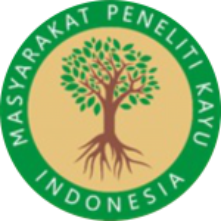KAJIAN MATI MERANGGAS PADA TANAMAN DUKU DI JAMBI (SUATU STUDI BIOEKOLOGI)
Study Of Death On Duku Plant In Jambi (A Bioecological Study)
DOI:
https://doi.org/10.22437/jsilvtrop.v6i1.20972Keywords:
Duku, Mati Meranggas, BioekologiAbstract
ABSTRACT
              Duku (Lansium domesticum) has become the flagship fruit of Jambi and is widely planted and becomes a source of income for farmers. In the last 5 years, around 310,828 trees have been damaged, that is, they die and die. In natural conditions, duku jambi plants are often flooded. Thus, conditions of hypoxia or anoxia are often experienced by the root system of plants. This limited O2 condition can affect the growing environment of the duku plant which in turn will affect the growth, development, and survival of the plant due to a decrease in energy. The method used is a field survey and takes environmental and soil data. Observations of duku plants and other vegetation include: the number of clumps, the number of duku individuals according to the growth phase, the type of vegetation, the number of individual species found in each sample unit, and the coverage area. . Based on the results obtained, it can be seen that the highest density is found in the Kelopak Alai area with the highest density value being the duku tree of 325, and the highest frequency is found in the area of ​​the Karang City area with the highest frequency value being the duku tree of 87.50, while for dominance The highest value is found in the village of Olak Rambahan with the highest dominance value is the duku tree of 3300,955.
Keywords : Duku, Bioecological, Death On
 ABSTRAK
 Duku (Lansium domesticum) sudah menjadi buah unggulan Jambi banyak ditanam dan menjadi sumber pendapatan petani. Dalam kurun waktu 5 tahun terakhir sekitar 310.828 pohon mengalami kerusakan yaitu mati meranggas. Pada kondisi alami, tanaman duku jambi sering tergenang air. Dengan demikian, kondisi hipoksia atau anoksia sering dialami oleh sistem perakaran tanaman. Kondisi O2 yang terbatas ini dapat mempengaruhi lingkungan tumbuh tanaman duku yang pada gilirannya akan mempengaruhi pertumbuhan, perkembangan, dan kelangsungan hidup tanaman karena terjadi penurunan energi. Metode yang digunakan adalah survey lapangan dan mengambi data lingkungan dan tanah, Pengamatan tanaman duku dan vegetasi lain meliputi : jumlah rumpun, jumlah individu duku menurut fase pertumbuhan, jenis vegetasi, jumlah individu spesies yang kedapatan pada setiap unit contoh, dan luas tutupan (coverage). Berdasarkan hasil yang didapat terlihat bahwa Kerapatan tertinggi terdapat di daerah Kelopak Alai dengan nilai kerapatan yang tertinggi adalah pohon duku sebesar 325, dan Frekuensi tertinggi terdapat di daerah di daerah Kota Karang dengan nilai frekuensi yang tertinggi adalah pohon duku sebesar 87,50, sedangkan untuk Dominansi tertinggi terdapat di daerah desa Olak Rambahan dengan nilai dominansi yang tertinggi adalah pohon duku sebesar 3300,955.
Kata kunci : Duku, Mati Meranggas, Bioekologi
Downloads
References
Balerdi CF, Crane JH, Schaffer B. 2003. Managing your tropical fruit grove under changing watertable levels. Fact Sheet HS 957, 1-5
Blom CW, Voesenek LA. 1996. Flooding: The survival strategies of plants. Tree Physiology 11, 290-295
Cao FL, Conner WH. 1999. Selection of flood-tolerant Populus deltoides clones for reforestation projects in China. Forest Ecology and Management 117, 211-220
Colmer TD. 2003. Long-distance transport of gases in plants: A perspective on internal aeration and radial oxygen loss from roots. Plant, Cell and Environment 26, 17- 36
Cox, G.W. 2002. General Ecology, LaboratoryManual . Eigth edition. McGraw Hill.New York.
Dat J, Capelli N, Folzer H, Bourgeade P, Badot P-M. 2004. Sensing and signaling during plantflooding. Plant Physiology and Biochemistry 42, 273-282
Daubenmire, R.F. 1974. Plant and Environment, . Third edition.JohnWiley & Sons.NewYork
Dispertan. Prov. Jambi. 2009. Data pertanian tanaman pangan dan hortikultura tahun 2008.
Dianas Pertanian Tanaman Pangan. Pemerintah Provinsi Jambi.
Drew M. 1997. Oxygen deficiency and root metabolism: Injury and acclimation under hypoxia and anoxia. Annual Review Plant Physiology and Plant Molecular Biology 48, 223-250
Drew MC, Cobb BG, Johnson JR, Andrews D, Morgan PW, Jordan W, Jiu HC .1994. Metabolic acclimationof root tips tooxygen deficiency. Annals of Botany 74, 281-286
Else MA, Coupland D, Dutton L, Jackson MB. 2001. Decreased root hydraulic conductivity reduces leaf water potential, initiates stomatal closure and slows leaf expansion in flooded plants of castor oil (Ricinus communis) despitediminisheddelivery of ABA from the roots to shoots in xylem sap. Physiologia Plantarum 111, 46-54
Folzer H, Dat J, Capelli N, Rieffel D, Badot P-M. 2006. Response to flooding of sessile oak: Anintegrativestudy. Tree Physiology 26, 759-766
Gibbs J, Greenway H. 2003. Mechanisms of anoxia tolerance in plants. I. Growth, survival and anaerobic catabolism. Functional Plant Biology 30, 1-47
Igamberdiev A, Hill R. 2004. Nitrate, NO and haemoglobin in plant adaptation tohypoxia: an alternativeto classic fermentationpathways. Journal of Experimental Botany 55, 2473-2482
Kaldenhoff R, Fischer M. 2006. Functional aquaporin diversity in plants. Biochimica and Biophysica Acta – Biomembranes 1758, 1134-1141
Kirk GJD, Solivas JL, Alberto MC. 2003. Effects of flooding and redox conditions on solute diffusion in soil. European Journal of Soil Science 54, 617-624
Kusmana, C. 1997.Metode Survey Vegetasi. PT.Penerbit Institut PertanianBogor.Bogor. Ludwig, A.J., and J.F. Reynolds. 1988. Statistical Ecology, a Primer on Methodsand
Computing . JohnWilley&Sons. NewYork.
Lu Y, Watanabe A, Kimura M. 2004.Contribution of plant photosynthates to dissolved organic carbon in a flooded rice soil. Biogeochemistry 71, 1-15
Malik AI, Colmer TD, Lambers H, Schortemeyer M. 2001. Changes inphysiological and morphological traits of roots and shoots of wheat in response to different depths of waterlogging. Australian Journal of Plant Physiology 28, 1121-1131
Parent C, Berger A, Folzer H, Dat J, Crиvecoeur M, Badot P-M, Capelli N. 2008. A novel nonsymbiotichemoglobin from oak: Cellular and tissue specificity of gene expression. New Phytologist 177, 142-154
Peng H-P, Chan C-S, Shih M-C, Yang SF. 2001. Signaling events in the hypoxic induction of alcohol dehydrogenase genein Arabidopsis. Plant Physiology 126, 742-749
Pezeshki SR, Pardue JH, Delaune RD. 1996. Leaf gas exchange and growth of flood- tolerant and flood-sensitive tree species under low soil redox conditions. Tree Physiology 16, 453-458
Probert ME, Keating BA. 2000. What soil constraints should be included in crop and forest models? Agriculture, Ecosystems and Environment 82, 273-281
Ram PC, Singh BB, Singh AK, Ram P, Singh PN, Singh HP, Boamfa I, Harren F, Santosa E, Jackson MB, Setter TL, Reuss J, Wade LJ, Pal Singh V,Singh RK. 2002. Submergence tolerance in rainfed lowland rice: Physiological basis and prospects for cultivar improvement through marker-aided breeding. Field Crops Research 76, 131-152
Sachs M, Vartapetian B. 2007. Plant anaerobic stress I. Metabolic adaptation to oxygendeficiency. Plant Stress 1, 123-135
Secchi F, Lovisolo C, Uehlein N, Kaldenhoff R, Schubert A. 2007. Isolation and functional characterization of three aquaporins from olive (Olea europaea L.). Planta 225, 381-392
Thomson CJ, Greenway H. 1991. Metabolic evidence for stelar anoxia in maize roots exposed to low O2 concentrations. Plant Physiology 96, 1294-1301
Yordanova R, Christov K, Popova L. 2004. Antioxidative enzymes in barley plants subjected to soil flooding. Environmental and Experimental Botany 51,93-101
Zarate-Valde JL, Zdsoski RJ, Lauchli AE. 2006. Short-term effect of moisture on soil solution pH and soil Eh. on of the exodermis of two wetland species, Phragmites australis and Glyceria maxima New Phytologist 173. , 264-278















